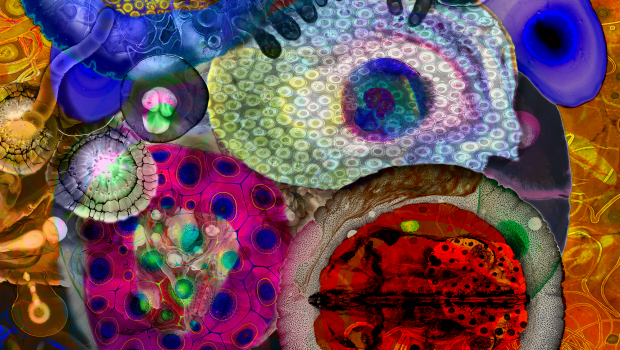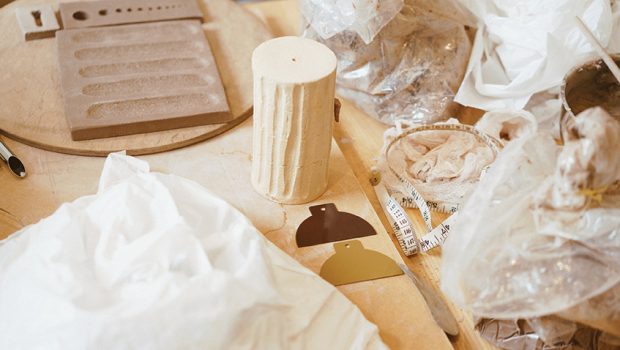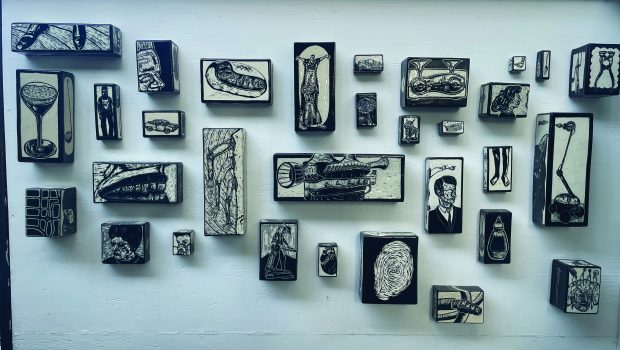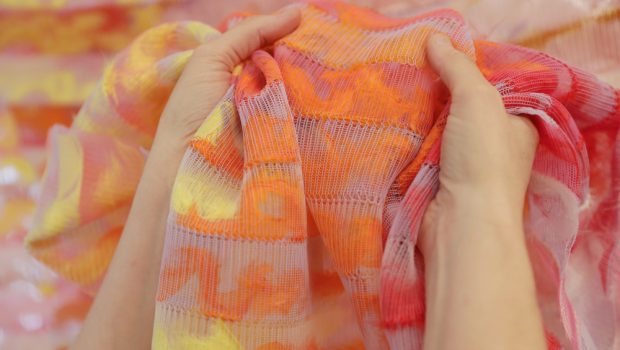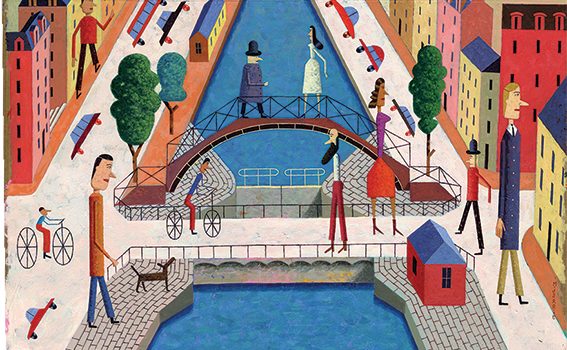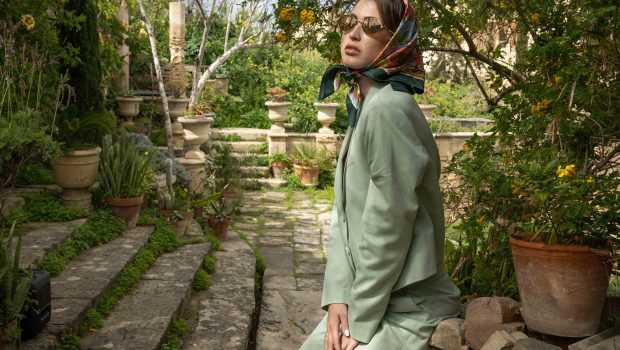Mass Production
Has the education system limited our true creative potential? Tamara Fenech shares her experience and opinion about the limitations and potentials of the education system.

Growing up in Malta and having to participate within a somewhat stone-age educational system was always a struggle for me. A one-size-fits-all approach that simply aimed to produce the same kind of humans in the end – Lawyers, Architects, Doctors and Accountants.
We had boxes that needed to be filled, and whoever didn’t fit within those boxes was simply deemed unsuccessful. Being enrolled in the Maltese educational system felt like being a part of an organised establishment that was on a mission to strip all students from their individual authenticity.
Understanding my own authenticity, and most of all, embracing it, has always been a huge part of who I am. However, the longer that I was tied to the old-fashioned educational system, the more I began to doubt my authentic self. As I hustled through my 12 years of secondary school, it was as though my class friends and I were all part of a well-oiled mass production machine – similar to that of Henry Ford’s assembly line established in the 1920s. We all had our own different components, but all came out as the same end product.
Instead of being empowered about our different components (abilities, strengths, capacities and so on), if we failed in our mid-term or annual exams, we simply didn’t deem well enough for the assembly line – the system at large. If we happened to be a round shape, we had to work relentlessly to remould ourselves and fit into the squared box that was required from us – a box that seemed to be the only measurement of success. In other words, if you were incapable of supernaturally shape-shifting your circle into a square, you were somewhat unable to fit into the perceived norms of success.
The more I tried to reshape that circle, the harder things became, which on paper, resulted into more academic failures. For the most part, the feeling of inability and unworthiness to succeed in school didn’t come from my peers, my family or my teachers for the matter; it came from that very same assembly line – the system.
When subjects need to be grasped, understood and implemented by such a wide variety of individual minds, their foundations simply cannot be based on such generic testing formats. Not only does this format simply place students on the assembly lines that it assumes they are most fit for, but it also creates minimal measures of success, leaving no room for empowerment or motivation.
In my case, I was fortunate enough to have been brought up in a household that represented two opposite ends of the success spectrum. My Father came from a family of academics, lawyers and politicians – the box fillers. Whereas my Mother came from a family of artists, dreamers and designers – the box rebels. I am eternally grateful for this balance.
Throughout my school years, my family always empowered me to understand that both the box fillers and the box rebels are needed for this world to function. I was thought to believe that there is no right or wrong kind of person and that the one-size-fits-all approach is simply one way of measuring success.
I must say that my school in particular also helped to instil this kind of thinking in the way that we engaged in classroom projects and so on. Being immersed in nature and learning from nature was part of the school’s DNA. This is something that I am also proud to have been a part of.
However, the fact of the matter is that the school was still bound to a heavily imposed academic system. Students were, and are, still made to comply with the broader scheme of things. They are made to feel that in order to get on successfully in life, they better jump on the assembly line and begin shape shifting into that well-known box. Unfortunately, this attitude not only comes from the system, it also comes from the very roots of Maltese culture – making it so much more challenging for those differently shaped humans.
Nevertheless, after a lot of hard work, I successfully completed most of my O-Levels and went on to also complete my A-Levels. Did I shape shift? Slightly. Did I feel successful? Yes. However, the battle of squaring out my circle didn’t end there.
As a further result of my society’s, and back then my, measurements of success, I wanted to further my studies on a Bachelor Degree level. At the time, the creative avenues in Malta were extremely slim. So, as a creative being in an academically focused world, I couldn’t help feel somewhat left out and ultimately obstructed from exploring my creativity to its full potential.
As Malta had joined the EU relatively recently, us students suddenly had a whole new world of educational avenues to tap into. Thanks to that, and a few other factors, I was able to enrol in a degree in Leeds in the United Kingdom. Suddenly I thought that my shape shifting days where over. I had finally done it. Except, when the bachelor degree of your choice, over ten years ago, is Fashion Design, I assure you those shape shifting days were far from over.
While obtaining a fashion design degree in today’s world is desirable and deemed more “worthy”, at that time it was still quite unheard of and seemed to lack a level of ambition. The look on people’s faces when I told them that I was going to study fashion design or that I was enrolled in my degree was absolutely priceless. As the person on the receiving end of most of these conversations, that I somehow felt obliged to participate in, be it with parent’s friends, old teachers, old class friends etc., you can’t help but examine their reaction.
The conversation always seemed to flow in the same kind of way. It would begin with them asking what I am up to and what am I making for myself. I would then reply that I am studying in the UK. This immediately grabbed their attention, resulting in a semi impressed facial expression. They would then ask me what I was studying and I would promptly say fashion design. It is safe to day that I lost their attention as quickly as I grabbed it.
The reason why I added this little part to the story wasn’t to score some pity points. I added it because I truly believe that it personifies the result of our educational system and how its current one-track minded approach ultimately seeps through to the mentality of society. It reflects the way most people would perceive as successful; one based on the kind of profession you have chosen, hence the kind of studies you have done to help you get there. It is an example of how our school trainings and teachings make us believe that there are only a handful of professions that are considered worthy of ones attention and interest.
The result of the original assembly line mass-produced educational system leads to a society that is standoffish and intolerant towards the different shapes. That is why, I believe, the educational system and the way that we teach our students is a crucial aspect towards the development and progression of society at large.
Just because today, in 2019, it is easier for someone to be “accepted” for doing a fashion design degree, it doesn’t mean that we are empowering our students and children of the future, to explore the professions of their own choosing. The system is still designed on a one-size-fits-all format that intends to move us all in the same direction. In fact, Law and Medicine still remain two of the highest most graduated courses on the Island[i]. And while there is absolutely nothing wrong with either of these two professions, the reality is that this mentality and approach simply riddles us with a lack of diversity and authenticity, while also barring a large chunk of our students the ability to reach their full potential.
In 2014 I travelled to Bali, where I had the amazing opportunity to volunteer for a school called Green School. A tropical school built in the middle of the forest, along the Ayung River near Ubud, constructed out of bamboo. Yes bamboo. The grounds are filled with different robust structures, hosting classrooms that do not have any walls or doors – as part of their mission towards inclusion, equity, sustainable education and a purpose-driven curriculum. All I remember thinking was “Wow! These kids are all destined for greatness”. Suddenly I was exposed to a new kind of education, one that requires zero shape shifting, but rather, encourages all individuals to discover their own personal shape and mould freely. This is when I realised the sheer importance of authenticity and embracing individual minds through our educational systems. However, the reality is that there is only a large minority of people who can actually pick up and plonk themselves in the middle of Bali to attend a school that carves out a path of greatness for each and every one of its students.
The highly regarded Scandinavian schooling systems, which relatively recently reworked their curricula to include more creativity, collaboration and communication, proves that we do not necessarily need to go to the greatness half way across the world, we can actually bring it to us. Finland for example, is known to have one of the best schooling systems in the world. When someone asks what’s so great about Finland’s schools, you will be typically supplied with two main facts: they have shorter school days and they don’t do standardised tests. The Finnish education system also works so successfully due to the core principles of its entire structure. These principles have been adopted from the pragmatic, democratic and child-centred educational thinking of John Dewey, one of the most prominent American intellectuals of the first half of the twentieth century. One of the main principles is that “one should be allowed to choose their educative path, which should never lead to a dead end”.
Fundamentally, this means that all students have the right to explore and find their own choice of studies to access through decision-making regarding their own lives and studying in school. By default, this empowers each individual with the right tools to formulate their own measures of success through the very same educational system that enables them to achieve their goals.
To give a little more context, Sixth form level, for example, is split into two main pathways, general and vocational, both taking around three years. The general education takes the form of course work, giving students a lot of freedom to decide their studies. Vocational education is more job-focused, incorporating apprenticeships as well as school learning, ending with competence-based qualifications after students complete their individual study plans. The best part about this diverse approach is that students aren’t locked into these paths. As part of Finland’s devotion to education and decision-making, the two paths are permeable so that students can discover new interests or even create paths that thread between the two.
In conclusion, it is clear that in today’s world we now have access to multiple new ways of teaching and building our educational systems. In 2019, we cannot live in a world that structured its educational foundations many decades before this present generation where even around. Through Finland’s consecutive success rates of student performance, it proves that academia on its own is merely one tiny measurement of success. It proves that if we want all students to thrive through education, which is ultimately a means of democratic freedom, we must broaden our variety of shapes that we are producing in our society. We must allow our students to figure their own unique shapes out on their own, empowered by the very same space that is provided through the educational system. We must break away from the one track minded box filling routes, and instead open up to circle filling ones, oval, diamond, rectangles … whatever floats your boat.
On reflection, I must say that through my shape shifting days I did indeed manage to create my own unique shape, which in the end reconnected me with my authentic self. However, the point is that students shouldn’t have to battle with the system and the society it creates, in order to reach to that stage. Students should have the freedom to begin building their unique shape from the first day of school. So, as civil society, as students, as teachers and educators, as leaders and governments, let us collectively come together to reshape the way our children are being thought. Let us free the chains of education and instead create formats that liberate our future generations and enable them to reach their full potential, through the true power of knowledge.

